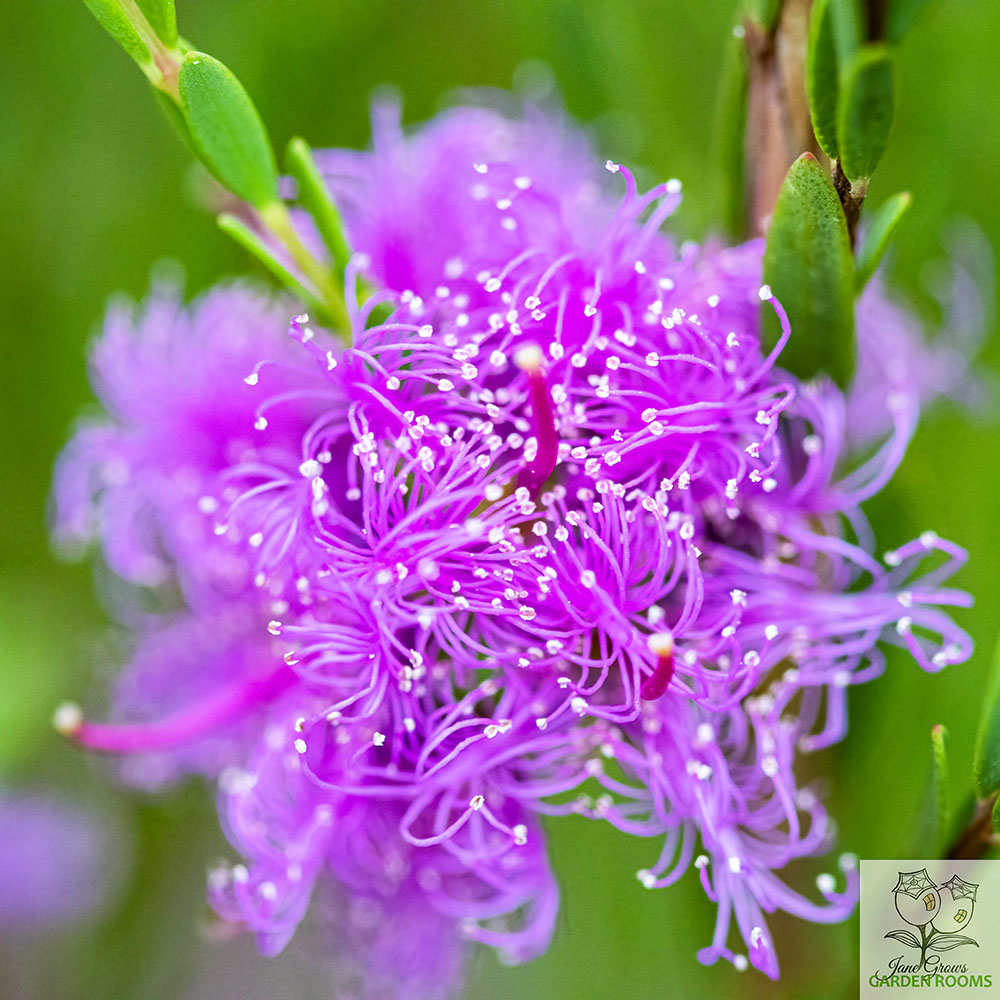An Abundant Source Of Nectar For Insects …
Melaleuca thymifolia is a highly variable shrub that has been cultivated to produce many forms with names that invariably reference the flowers: Cotton Candy, Pink Lace, White Lace, Little Beauty. In contrast the common names tend to reference the foliage and the abundant nectar produced by the plant: Thyme Honey Myrtle, Thyme-leaf Honey Myrtle, Marsh Honey Myrtle.

The flowers are an abundant source of nectar for insects and like most melaleucas it is frequently visited by native bees and other pollinators. In good conditions these plants flower for eight months of the year with a full flush at the end of spring and autumn and dormancy from mid-winter to the end of November.
It prefers light soils and moist conditions but is drought hardy once established. In the Australian National Botanic Gardens, it has tolerated frost and demonstrated its variability in response to environment. I have seen this plant growing as a small shrub on Boomerang Road and surviving through long dry periods with no watering. In dry conditions it is unlikely to produce more than one or two flowers at a time.
When grown in amongst other shrubs, this lovely plant has an upright form with its branches reaching for the sky up to 1.5 metres, however in open areas it can spread over the ground barely reaching 50cm high while spreading 1.5 metres as a groundcover.
Indigenous Australians harvested the flowers and either sucked the nectar from the blooms or soaked them in water to produce a sweet drink. Essential oil from the leaves and twigs has also been used medicinally as an antiseptic.
It is easy to propagate from seed but can also be propagated from semi-hardwood cuttings in Summer. Apparently, it readily hybridises with other Melaleuca species which may explain its variability.
iNaturalist has a confirmed observation of the plant growing wild in Tamborine which means there must be more of them about!
